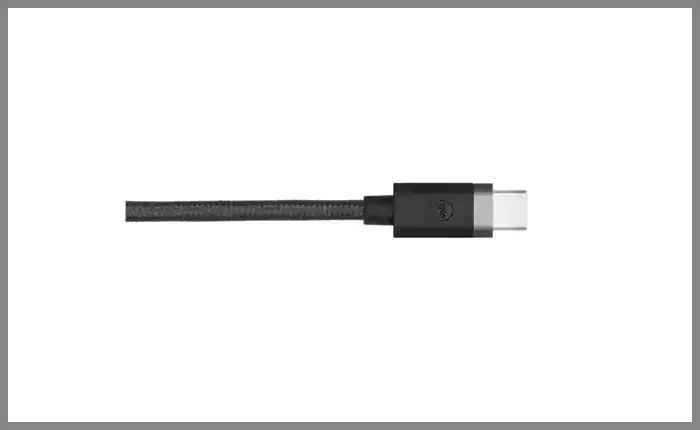Apple iPhone 15 Series Expected Features
As the eagerly anticipated September 12th event approaches, Apple enthusiasts and tech enthusiasts alike are buzzing with anticipation for the unveiling of the iPhone 15 generation. Apple, known for its tradition of keeping its products tightly under wraps until the big reveal, has struggled to maintain secrecy this time around, owing to the immense interest and speculation surrounding these upcoming devices. Despite the company's efforts, numerous leaks and rumors have flooded the digital landscape, providing a glimpse into what we believe to be the key features of the iPhone 15 and its larger counterpart, the iPhone 15 Plus. These leaks have generated a significant amount of excitement and intrigue, as Apple fans prepare to witness the latest innovations from one of the world's most influential tech giants.
USB-C Cable
connector and embracing USB-C, Apple is aligning its ecosystem further with a universal standard. This transition may indeed be somewhat inconvenient for users with an abundance of Lightning accessories, but Apple plans to ease the shift by including high-quality USB-C-to-C cables in the retail packaging. These cables are designed to support up to 60W, making them versatile enough for charging not just iPhones but also laptops. It's worth noting that while the cables are capable of high-power delivery, the iPhones themselves will cap at a 20W charging speed, similar to the current models. This compatibility with higher wattage may appeal to users who rely on multiple devices with varying power requirements.
Additionally, despite the shift to USB-C, both the cables and the iPhone 15's USB-C port itself will be limited to USB 2.0 speeds. This aligns with the industry norm, even among flagship Android devices. While it may not offer the fastest data transfer rates, the move to USB-C brings several advantages, such as improved compatibility and the ability to use a single cable for multiple devices within the Apple ecosystem, including Macs and iPads. This shift represents another step forward in Apple's pursuit of a more unified and versatile device ecosystem.

Batteries
According to insider reports, all iPhone 15 variants will receive battery improvements. While exact battery capacity figures remain unknown, rumors indicate that the iPhone 15 Pro Max and possibly the 15 Plus are preparing for substantial improvements, possibly approaching 5,000 mAh. In comparison, the iPhone 14 Plus and 14 Pro Max featured 4,323 mAh batteries. This battery improvement, if confirmed, is especially exciting for users desiring extended device usage. Apple appears poised to deliver a more power-efficient and longer-lasting mobile experience with its upcoming iPhone lineup, given the anticipated enhancements in faster charging capabilities on the Pro models.
Notch Quality
Apple's extra-wide notch, a design element that has become familiar to iPhone users over the years, is expected to be phased out with the iPhone 15 series. Instead, these upcoming models will employ what Apple refers to as a "Dynamic Island." This refers to the pill-shaped opening that will accommodate both the FaceTime camera and the FaceID hardware, resulting in a more modern appearance. For those anticipating a 120Hz ProMotion display, it appears that this year's standard iPhone models will not offer it.
The absence of LTPO (Low-Temperature Polycrystalline Oxide) panels, which can optimize power consumption even when the refresh rate is capped at 60Hz, demonstrates that the iPhone 15 series' primary focus resides elsewhere. While LTPO panels are enticing for their energy efficiency, it appears that Apple has opted to prioritize other display advancements for these particular devices.
Cameras
The iPhone 15 and 15 Plus will bring about a significant transition in the iPhone series' camera landscape. While last year's iPhone 14 Pros set the standard by exceeding 12MP, the standard models remained unchanged. This year, however, both the iPhone 15 and iPhone 15 Plus will feature a significant camera upgrade to a 48MP main sensor and f/1.6 lens. This enhancement promises to deliver superior low-light performance and image quality overall. Notably, the ultra-wide camera will maintain its 12MP resolution, and there will be no telephoto lens. Instead, it is anticipated that the enhanced primary camera will zoom more effectively.
Interestingly, the iPhone 15 Pro and 15 Pro Max will retain the 48MP cameras and 1/1.28-inch Sony IMX803 sensor from the previous year. However, it is important to note that the standard iPhone models will surpass their Pro counterparts in the camera department. The vanilla variants, according to Ming-Chi Kuo, will utilize stacked sensors, a technology that may actually provide superior performance. In contrast, the Pro models are anticipated to receive stacked sensors the following year. This strategic camera upgrade demonstrates Apple's ongoing dedication to stretching the limits of mobile photography across its product line.

Aluminum Body
Apple has made a notable shift in its choice of materials for the iPhone Pro series, following the introduction of stainless steel frames in the iPhone X and their continuation in subsequent Pro models. Drawing from the experience gained with the Apple Watch Ultra, which features titanium, the company is prepared to switch to this lighter material for the frames of the iPhone Pro.
This transition is expected to address concerns about the weight of older models, with some recent Pro Max models even surpassing the weight of certain foldable smartphones. In contrast, the standard iPhone models are expected to retain their aluminum frames, suggesting that significant changes in their build may not be on the horizon.
Additionally, dummies of the upcoming iPhones have provided a glimpse of the color options available at launch for both the vanilla and Pro series. While some of the color choices may appear uninspired, there are a few standout options that promise to add some flair to Apple's lineup. This diversity in color offerings is likely to cater to a range of consumer preferences, even if not all options capture the same level of attention.

Apple A16 chipsets
Reportedly, Apple's partnership with TSMC has secured roughly 90 percent of the semiconductor manufacturer's 3nm capacity for this year. This allocation is anticipated to be used to manufacture Apple's A17 Bionic chipsets. With two high-performance CPU cores and four efficient CPU cores, these forthcoming chipsets are anticipated to bring about a significant increase in mobile processing performance. Moreover, the A17 Bionic chipsets are poised to set a new record for mobile clock speed, with the high-performance processors reaching up to 3.7GHz.
In contrast, the iPhone 15 and 15 Plus are anticipated to remain one generation behind the Pro series, utilizing the A16 chipset that debuted in the Pro models of the previous year. Despite the fact that the chipset may not be the most recent, it is important to note that Apple's emphasis on optimization frequently ensures that even slightly older processors deliver impressive performance.
All iPhone 14 variants were equipped with 6GB of RAM. It's possible that the Pro models will receive an 8GB memory upgrade, but it's unlikely that the standard iPhone 15 and 15 Plus will receive this memory increase. Even with relatively conservative RAM allocations, Apple's integration of hardware and software has historically enabled efficient multitasking and overall seamless performance.
Outlook
Consumers and industry analysts are anticipating the iPhone 15 Pro Max's telescopic lens release with great interest. It is anticipated that this feature, combined with the superior chipset, will make the Pro Max the most popular model in the iPhone 15 series, accounting for approximately 35-40% of total orders for iPhone 15 devices. However, there have been reports of production difficulties, particularly concerning Sony's capacity to produce sufficient sensors for the periscope module. This may result in a launch delay for the iPhone 15 Pro Max, moving it into October. In contrast, the other three iPhone 15 models are expected to be available for pre-order shortly after their respective announcements.
As the prominence of the Pro models increases, there are indications that the demand for the standard models may decrease. According to reports, Apple has reduced its production objective for the iPhone 15 series from 83 million to 77 million units. This change is likely a result of the production issues mentioned previously, but it may also reflect an expectation of weaker demand for non-Pro models.
It will be fascinating to observe how these market dynamics play out. The price of the iPhone 15 and 15 Plus is anticipated to remain unchanged, while the iPhone 15 Pro is anticipated to increase by $100. The iPhone 15 Pro Max, on the other hand, may experience a price increase of $100 to $200. These pricing strategies are likely to have a significant impact on consumer preferences and iPhone 15 sales as a whole.
 Consumers and industry analysts are anticipating the iPhone 15 Pro Max's telescopic lens release with great interest. It is anticipated that this feature, combined with the superior chipset, will make the Pro Max the most popular model in the iPhone 15 series, accounting for approximately 35–40% of total orders for iPhone 15 devices.
Consumers and industry analysts are anticipating the iPhone 15 Pro Max's telescopic lens release with great interest. It is anticipated that this feature, combined with the superior chipset, will make the Pro Max the most popular model in the iPhone 15 series, accounting for approximately 35–40% of total orders for iPhone 15 devices.However, there have been reports of production difficulties, particularly concerning Sony's capacity to produce sufficient sensors for the periscope module. This may result in a launch delay for the iPhone 15 Pro Max, moving it into October. In contrast, the other three iPhone 15 models are expected to be available for pre-order shortly after their respective announcements. As the prominence of the Pro models increases, there are indications that the demand for the standard models may decrease.
According to reports, Apple has reduced its production objective for the iPhone 15 series from 83 million to 77 million units. This change is likely a result of the production issues mentioned previously, but it may also reflect an expectation of weaker demand for non-Pro models. It will be fascinating to observe how these market dynamics play out. The price of the iPhone 15 and 15 Plus is anticipated to remain unchanged, while the price of the iPhone 15 Pro is anticipated to increase by $100. The iPhone 15 Pro Max, on the other hand, may experience a price increase of $100 to $200. These pricing strategies are likely to have a significant impact on consumer preferences and iPhone 15 sales as a whole.